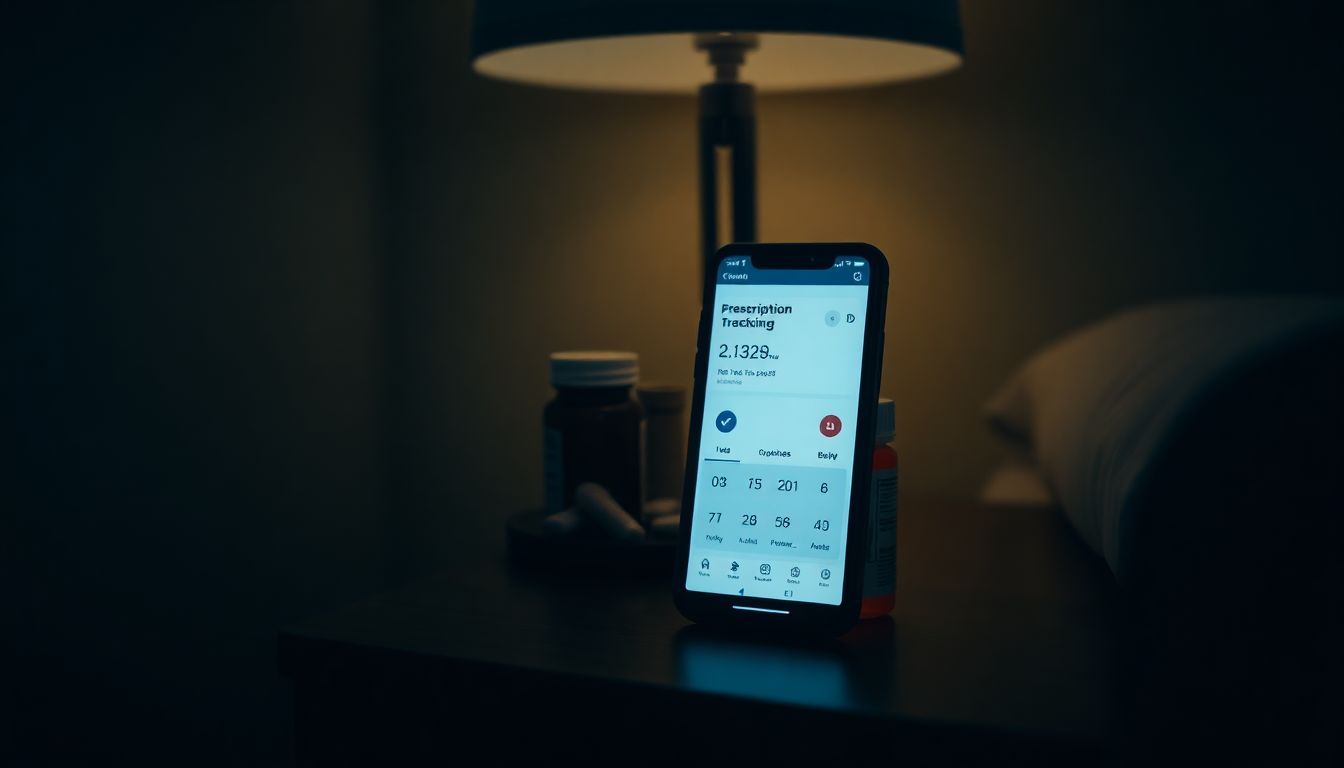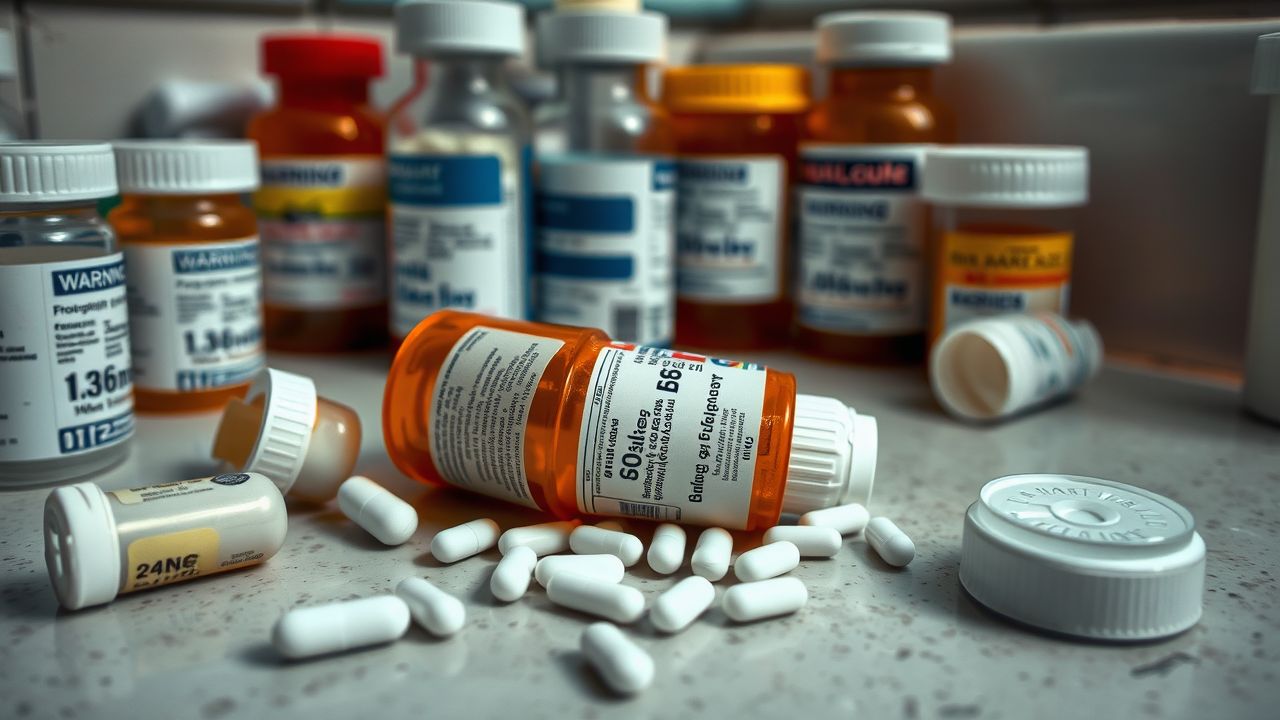Many people rely on high-dose opioids for pain relief, but these medications come with serious risks. Long-term use can lead to dependence, overdose, or other health issues. This article will explore safer ways to reduce opioid use while managing pain effectively.
Thank you for reading this post, don't forget to subscribe!Keep reading to learn strategies that could save lives.
Key Takeaways
- High-dose opioids increase risks like addiction, overdose, and mental health problems. Careful monitoring and gradual tapering help reduce harm safely.
- In 2021, over 107,000 Americans died from drug overdoses. Synthetic opioids like fentanyl caused nearly 88% of opioid-related deaths.
- Gradual dose reductions with regular check-ins, alternative therapies (e.g., physical therapy), and non-opioid medicines improve pain management while lowering opioid dependence risks.
- Patient education on opioid dangers builds informed decisions about safer treatments. Shared decision-making with doctors ensures better outcomes for managing chronic pain or withdrawal challenges.
- Policies supporting safe prescribing practices and reducing stigma around opioid use disorder encourage recovery and protect more lives from misuse or overdose hazards.
Concerns about High-Dose Opioid Use

High-dose opioid use can lead to serious health risks, like addiction and overdose. Careful tracking and understanding of a patient’s needs are key to reducing harm.
Risks and Associated Concerns
Using high-dose opioid medications carries several serious risks. These drugs may lead to physical dependence, substance use disorders, or even overdose. In 2023, increased attention focused on the rising rates of prescription opioid misuse and related deaths in America.
Long-term use can cause tolerance, making opioids less effective for managing chronic pain over time. Combining opioids with other substances like alcohol or benzodiazepines raises the chance of breathing problems and fatal overdoses.
Patients also face mental health struggles linked to prolonged opioid therapy. Depression and anxiety often worsen during or after treatment changes due to withdrawal symptoms. Emergency room visits tied to opioid overdoses keep climbing each year—putting more pressure on healthcare systems already strained by substance abuse cases.
Strong monitoring practices help reduce these dangers but require careful planning between patients and providers for safer outcomes.
Importance of Monitoring and Evaluation
High-dose opioid use increases the risk of misuse, addiction, and overdose. Careful monitoring helps catch early signs of problems like opioid abuse or dependency. Regular evaluation ensures prescriptions match the patient’s actual pain management needs.
Opioid prescription drug monitoring programs (PDMPs) track medication use. These systems help identify unsafe patterns in prescribing or dispensing opioids. By evaluating treatment plans regularly, healthcare providers can adjust medications to improve safety and reduce harm while maintaining effective pain control.
Strategies for Safely Reducing High-Dose Opioid Use
Reducing opioid doses should be done slowly and carefully to avoid withdrawal or increased pain. Regular check-ins with healthcare providers help track progress and address challenges.
Gradual Tapering of Opioid Doses
Reducing high-dose opioid use can lower risks of harm. Gradual tapering helps ease withdrawal and keeps patients safe.
- Start with small dose reductions over weeks or months to avoid strong withdrawal symptoms. This allows the body to adjust slowly.
- Work closely with healthcare providers like primary care physicians, pharmacists, or psychologists during the process. They monitor progress and offer support.
- Use extended-release medications when tapering, as they provide longer pain control and steady relief during dose changes.
- Consider alternative treatments such as nonopioid analgesics, skeletal muscle relaxants, or physical therapy for extra pain management support.
- Encourage shared decision-making between the patient and doctor. This ensures both parties agree on the tapering plan and goals.
- Educate patients about possible withdrawal effects, like nausea or restlessness, so they know what to expect during the change.
- Schedule regular check-ins with healthcare teams for follow-ups to track progress and address issues promptly.
- Seek guidance from addiction specialists if opioid use disorder (OUD) or related conditions arise during tapering.
- Combine behavioral health therapies like counseling or mental health interventions for added emotional support in complex cases.
- Use evidence-based practices outlined in clinical guidelines to ensure safe doses are maintained throughout treatment changes.
Gradual tapering protects patient safety while reducing dependency risks effectively over time.
Regular Follow-Up Appointments
Slowly lowering opioid doses works best with regular follow-up care. These visits help check how well pain is managed and spot any side effects early. A doctor or nurse can adjust medications as needed during these meetings.
Consistent check-ins build trust between patients and healthcare providers.
Frequent appointments also keep track of progress and uncover new concerns, like withdrawal symptoms or mental health issues. This approach ensures safer treatment while avoiding sudden changes that could harm the patient.
Alternative Pain Management Strategies
Physical therapy helps reduce pain without drugs. It focuses on exercises to strengthen muscles, improve movement, and lessen discomfort. For chronic pain like low back pain or fibromyalgia, it can work well over time.
Many clinics now include physical therapy as part of comprehensive care plans. It’s safer than opioids and has fewer side effects.
Non-opioid medications also ease pain effectively. Drugs like duloxetine and pregabalin are often prescribed for nerve pain or fibromyalgia. They target the source of discomfort without risking opioid addiction or misuse.
These options give patients relief while avoiding long-term harm from prescription opioids—leading perfectly into regular follow-up appointments for ongoing care!
Patient Education
Educating patients about opioid use is key to safety. High-dose opioids can lead to risks like addiction, overdose, and side effects. Patients must understand these dangers before starting treatment.
Clear communication helps them make informed choices about their health care.
Doctors should explain alternatives for pain management, such as SNRI medications or physical therapy. Discussing medication-assisted treatments (like buprenorphine) for opioid misuse builds trust and spreads awareness.
Providing written materials ensures patients have the tools they need to manage chronic pain safely outside of clinics or hospitals.
Shared Decision-Making with Healthcare Providers
Patients and healthcare providers should work together to manage opioid use. Open conversations allow patients to share concerns and goals while doctors explain risks, benefits, or safer alternatives.
This teamwork helps create a clear plan for reducing prescription opioids.
Shared decision-making builds trust. Patients feel involved in their treatment choices, especially during chronic pain management or end-of-life care. Addiction specialists or social workers can also join the discussion for added support—leading naturally into the “Role of Addiction Specialists.
Role of Addiction Specialists
Addiction specialists work closely with healthcare teams to manage high-dose opioid prescriptions. They guide safe dose reductions and provide medications for opioid use disorder (OUD).
Using evidence-based treatments, they help reduce risks like withdrawal or relapse.
These experts also address mental disorders linked to drug abuse. Their role includes creating personalized plans that combine pain management techniques and counseling. This approach ensures both physical and mental care during treatment transitions.
Comprehensive Pain Management Programs
Comprehensive pain management programs utilize various methods to address pain. These programs often involve a team of specialists, including doctors, nurses, physical therapists, and mental health professionals.
They collaborate to provide options such as palliative care, physical therapy, cognitive-behavioral therapy, or prescription opioids for severe cases such as cancer treatment or end-of-life care.
This approach decreases reliance on high-dose opioid prescriptions and minimizes the chance of opioid misuse or overdose.
Health care systems incorporating these programs emphasize safer drug administration and alternative treatments—like tramadol for acute pain or hydromorphone in emergency departments when necessary.
Patients receive education about risks associated with opioid agonists while exploring effective ways to manage both acute and chronic pain. Addiction specialists can also provide critical support through personalized care plans crafted specifically for someone with an opioid use disorder (OUD).
Supporting Data and Testimonials
Real stories and data show how reducing high-dose opioid use can save lives—read on to see the impact.
Data and Statistics on Opioid Overdose Rates
Opioid overdose rates have been alarming over the past decade. The numbers highlight the urgent need for safer prescribing practices and harm reduction strategies. Here’s a snapshot of the data:
| Year | Total Overdose Deaths (All Drugs) | Opioid-Related Overdose Deaths | Percent Involving Synthetic Opioids (e.g., Fentanyl) |
|---|---|---|---|
| 2019 | 70,630 | 49,860 | 73.1% |
| 2020 | 91,799 | 68,630 | 82.3% |
| 2021 | 107,622 | 80,411 | 87.9% |
– In 2021, over 107,000 Americans died from drug overdoses.
– Nearly 75% of overdose deaths involved opioids in some form.
– Synthetic opioids, including fentanyl, drove most fatalities, accounting for 88% of opioid-linked deaths that year.
Individuals misusing high-dose prescriptions often transition to illicit alternatives like fentanyl. This shift increases the risk of overdose and harm. These numbers expose a public health crisis that requires immediate, evidence-backed interventions.
…and that brings us to strategies for safely reducing opioid use while prioritizing patient safety.
Case Studies or Testimonials
Stories from real people help show the impact of reducing high-dose opioid use. These examples highlight safe approaches that work.
- A patient with cancer pain reduced their opioid dose over six months. With gradual tapering and alternative pain medicine, they avoided severe withdrawal and managed their pain well.
- One individual faced opioid misuse after taking prescription opioids for back pain. They worked with addiction specialists who used antagonists and offered therapy. This helped them regain control.
- A woman using high-dose opioids for end-of-life care chose shared decision-making with her doctor. Together, they created a plan to lower her dosage while addressing her concerns.
- A veteran suffering from chronic pain joined a comprehensive pain management program funded by Medicaid. The program included physical therapy, non-opioid medications, and regular follow-ups.
- In 2020, a dentist helped a patient avoid long-term drug use after tooth surgery by limiting the opioid prescription to three days—reducing overdose risks effectively.
- An elderly man with indications for high-dose opioids worked closely with his physician assistant to develop a slow taper schedule. Over the course of two years, he adjusted well without adverse effects.
- Testimonials from patients often stress the role of patient education in feeling empowered during this process—helping them understand symptoms and setting realistic goals together with healthcare providers.
These cases underline how compassion and teamwork aid safe recovery and minimize harm related to opioids.
Encouraging Policy Support and Stigma Reduction
Strong policies and support programs can help lower opioid misuse while reducing judgment toward patients. Read more to explore how this can create safer care for everyone.
Support for Initiatives to Reduce High-Dose Opioid Prescriptions
Policies can help limit high-dose opioid prescriptions. Encouraging safer clinical practices reduces the risk of misuse and overdose. Programs backed by organizations such as the National Institute on Drug Abuse focus on promoting safe prescribing habits.
These efforts protect patients without cutting off necessary pain management.
Legislation can also fund training for healthcare providers like physicians, physician assistants, and dentists. Educating them ensures they use evidence-based guidelines when writing prescriptions.
Support from policymakers strengthens these initiatives, reducing harm linked to prescription opioids while addressing the opioid epidemic head-on.
Importance of Stigma Reduction
Reducing stigma helps people seek help for opioid misuse and addiction. Many fear judgment when admitting struggles with opioid use disorder (OUD). This fear keeps them from asking for support, which increases harm.
Creating a safe and non-judgmental space encourages open conversations about OUD.
Stigma also affects treatment access. Patients may avoid clinics due to shame or discrimination. Healthcare workers must focus on patient education to battle these biases. Shared decision-making builds trust, showing patients their concerns matter.
Compassion can save lives by removing barriers to care and recovery programs.
Conclusion
Safe opioid use saves lives. Gradual dose reductions prevent pain and withdrawal. Alternative therapies give hope to those managing chronic pain. Education empowers patients to make informed decisions.
Together with healthcare providers, people can find safer paths forward.
